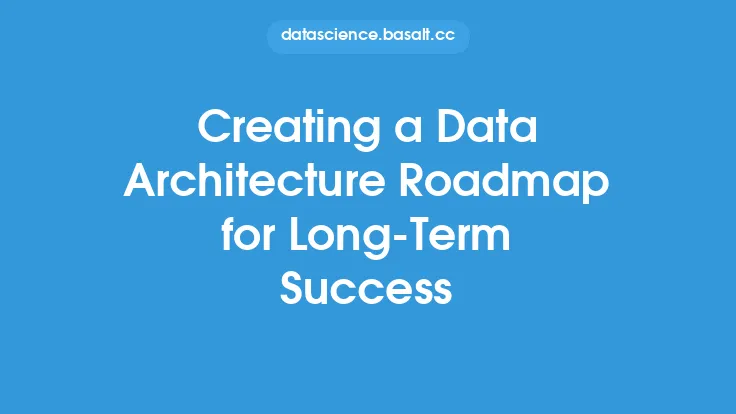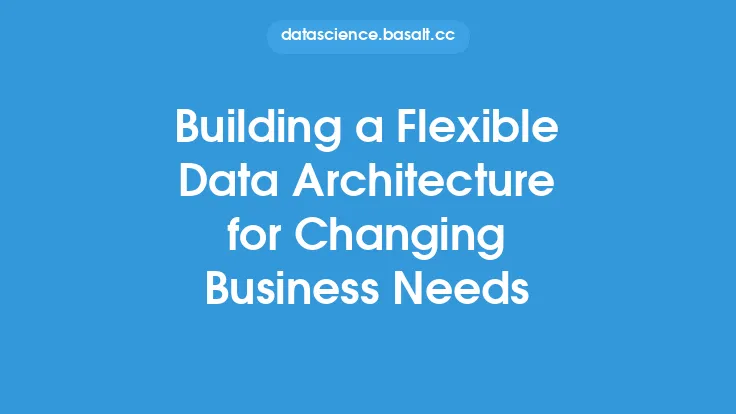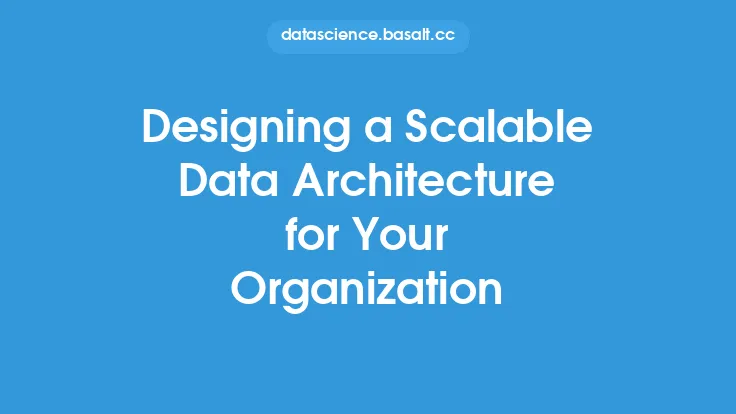In today's data-driven world, organizations are generating and collecting vast amounts of data from various sources. To extract insights and value from this data, a well-planned data architecture is essential. A data architecture roadmap serves as a strategic guide for designing, implementing, and maintaining a robust data management system that aligns with the organization's goals and objectives. This roadmap helps ensure that the data architecture is scalable, flexible, and adaptable to changing business needs.
Understanding the Components of a Data Architecture Roadmap
A comprehensive data architecture roadmap consists of several key components, including data sources, data processing, data storage, data governance, and data consumption. Data sources refer to the various systems, applications, and devices that generate and collect data. Data processing involves the methods and tools used to transform, aggregate, and analyze the data. Data storage encompasses the repositories and databases used to store and manage the data. Data governance focuses on the policies, procedures, and standards that ensure data quality, security, and compliance. Finally, data consumption refers to the ways in which the data is used to support business decision-making and drive organizational success.
Assessing Current State and Future Requirements
To create an effective data architecture roadmap, it is essential to assess the organization's current data management capabilities and identify areas for improvement. This involves evaluating the existing data sources, processing systems, storage infrastructure, and governance policies. It is also crucial to consider future requirements, such as increased data volumes, new data sources, and emerging technologies like artificial intelligence and machine learning. By understanding the current state and future requirements, organizations can develop a roadmap that addresses their unique needs and challenges.
Developing a Data Architecture Vision and Strategy
A clear data architecture vision and strategy are critical components of the roadmap. The vision statement should define the organization's goals and objectives for its data management system, while the strategy should outline the steps necessary to achieve those goals. The strategy should include specific initiatives, such as implementing a data warehouse, developing a data governance program, or deploying a cloud-based data platform. It should also identify the resources, including personnel, technology, and budget, required to execute the strategy.
Designing a Flexible and Scalable Data Architecture
A flexible and scalable data architecture is essential for supporting the organization's growing data needs. This involves designing a modular and layered architecture that can accommodate new data sources, processing systems, and storage technologies. The architecture should also be able to handle increased data volumes and velocities, as well as support real-time data processing and analytics. Additionally, the architecture should be designed with security and governance in mind, incorporating features such as data encryption, access controls, and auditing.
Implementing a Data Governance Framework
A data governance framework is critical for ensuring the quality, security, and compliance of the organization's data. The framework should include policies, procedures, and standards for data management, as well as roles and responsibilities for data governance. It should also establish metrics and benchmarks for measuring data quality and governance effectiveness. The framework should be designed to be flexible and adaptable, allowing for changes in the organization's data management needs and regulatory requirements.
Executing the Data Architecture Roadmap
Executing the data architecture roadmap requires a structured approach, with clear milestones, timelines, and resource allocations. It involves implementing the initiatives and projects outlined in the strategy, such as deploying new data management systems, developing data governance policies, and training personnel. The execution phase should also include ongoing monitoring and evaluation, to ensure that the roadmap is on track and that the organization is achieving its data management goals.
Monitoring and Evaluating Progress
Monitoring and evaluating progress are critical components of the data architecture roadmap. This involves tracking key performance indicators (KPIs) and metrics, such as data quality, processing times, and storage capacity. It also requires conducting regular assessments and reviews, to identify areas for improvement and ensure that the roadmap is aligned with the organization's changing needs. The monitoring and evaluation process should be ongoing, with regular updates and revisions to the roadmap as necessary.
Conclusion and Next Steps
Creating a data architecture roadmap is a complex and ongoing process, requiring careful planning, execution, and monitoring. By following the steps outlined in this article, organizations can develop a comprehensive roadmap that supports their data management needs and drives business success. The next steps involve executing the roadmap, monitoring progress, and continuously evaluating and improving the data architecture. With a well-planned data architecture roadmap, organizations can unlock the full potential of their data and achieve their goals in an increasingly competitive and data-driven world.





